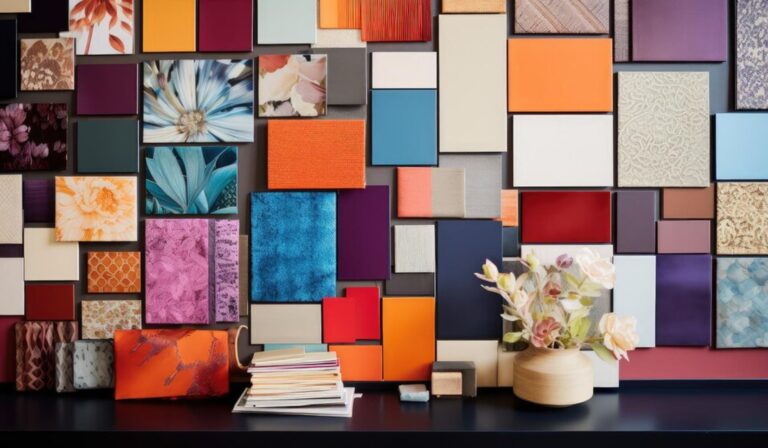Wall art has long been a reflection of human culture, values, and creativity. From the earliest cave paintings to the grand frescoes of the Renaissance, wall art has been a medium through which people express their identity, tell stories, and beautify their surroundings. As society evolved, so too did the forms and functions of wall art. In the contemporary era, a new trend has emerged: photo tiles for wall decor, a modern twist that marries personal expression with innovative design.
The Early Beginnings of Wall Art
The history of wall art can be traced back to prehistoric times, where early humans used cave walls as canvases to depict their daily lives. These rudimentary images, often portraying animals and hunting scenes, were not just artistic expressions but also served as communication tools and ritualistic symbols.
As civilizations advanced, wall art evolved. The Egyptians adorned their tombs and temples with intricate murals that told stories of gods, kings, and the afterlife. These artworks were rich in symbolism and were integral to their religious and cultural practices. The Greeks and Romans further refined wall art with the introduction of frescoes and mosaics, which decorated the interiors of homes, public buildings, and places of worship.
During the Renaissance, wall art reached new heights with the works of masters like Michelangelo and Leonardo da Vinci. Frescoes, such as those in the Sistine Chapel, became monumental achievements in art, blending architecture and painting to create immersive experiences that captivated viewers.
The Transition to Framed Art
The invention of the canvas during the Renaissance marked a significant shift in wall art. Artists could now create portable works that were not confined to walls. This led to the popularity of framed paintings, which became a staple in homes and galleries. Over time, the concept of wall art expanded to include not just paintings, but also prints, photographs, and other forms of visual art.
The 19th and 20th centuries saw a proliferation of art movements, each influencing wall art in different ways. Impressionism, Cubism, Surrealism, and Abstract Expressionism, among others, introduced new techniques, perspectives, and themes that broadened the possibilities of what wall art could represent. These movements also made art more accessible to the general public, as prints and reproductions became widely available.
The Rise of Modern Wall Art Trends
In the latter half of the 20th century, interior design trends began to influence the way people approached wall art. Minimalism, for instance, emphasized simplicity and function, leading to a preference for clean, understated pieces that complemented rather than dominated a space. Conversely, the eclectic style encouraged mixing and matching various art forms and styles to create a more personalized and dynamic environment.
With the advent of digital technology and the internet, wall art experienced another transformation. Photography became a dominant medium, and people began to seek out ways to personalize their spaces with their own images. The demand for custom artwork grew, paving the way for innovative solutions like photo tiles for wall decor.
The Emergence of Photo Tiles
Photo tiles represent a significant shift in how people think about and use wall art in their homes. Unlike traditional framed art or canvas prints, photo tiles offer a level of customization and flexibility that is uniquely suited to modern lifestyles.
These tiles are typically lightweight, durable, and easy to mount, often without the need for nails or other permanent fixtures. They can be arranged in various configurations, allowing individuals to create custom galleries that can be easily updated or rearranged. This adaptability makes photo tiles an ideal choice for renters or anyone who likes to frequently change their decor without causing damage to their walls.
Moreover, the ability to use personal photographs in photo tiles for wall displays adds a deeply personal touch to home decor. Whether it’s a collection of family portraits, travel memories, or favorite artworks, photo tiles enable individuals to tell their own stories through their walls.
Photo Tiles and the Future of Wall Art
The rise of photo tiles also reflects broader trends in consumer behavior and technology. As more people seek personalized and meaningful experiences in their homes, products that allow for customization are becoming increasingly popular. Photo tiles fit perfectly into this trend, offering a way to combine personal expression with artistic design.
Additionally, advancements in printing technology have made it possible to produce high-quality photo tiles at an affordable price, further driving their popularity. The use of vibrant, fade-resistant inks ensures that the images remain vivid over time, while the variety of available sizes and shapes allows for creative freedom in design.
As we look to the future, it’s likely that photo tiles for wall decor will continue to evolve, perhaps incorporating new materials, interactive features, or even digital elements. What remains clear is that the desire for personalized, adaptable, and expressive wall art is here to stay, and photo tiles are leading the charge in this new era of home decor.
Conclusion
From the ancient cave paintings to the innovative photo tiles for wall decor of today, wall art has undergone a remarkable evolution. Each era has contributed to the rich tapestry of styles, techniques, and purposes that define wall art. In the contemporary home, photo tiles represent the latest chapter in this ongoing story, offering a versatile and personalized way to transform walls into canvases of personal expression. As this trend continues to grow, it’s exciting to imagine the new possibilities that await in the world of wall art.

